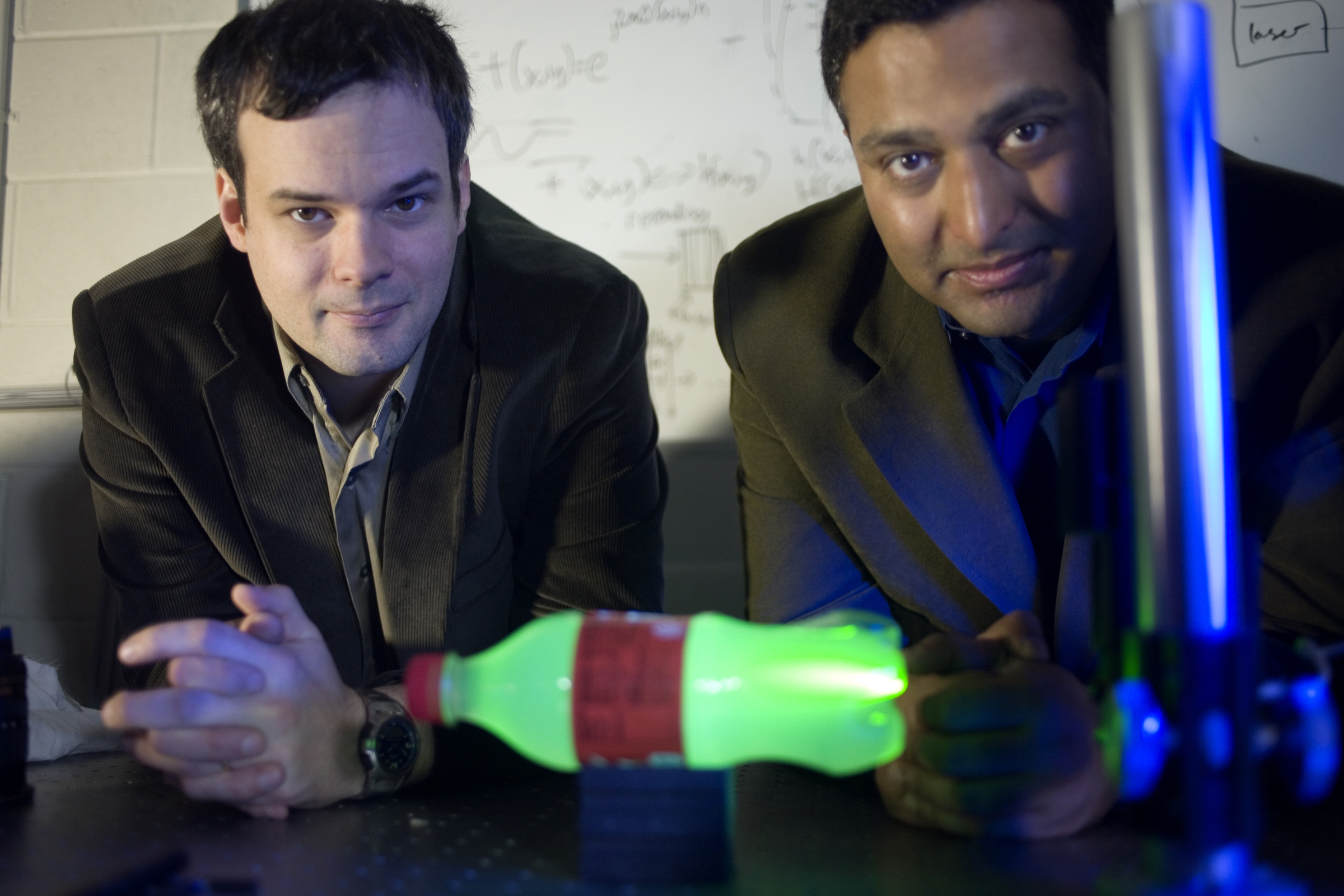MIT researchers have created a new imaging system that can acquire visual data at a rate of one trillion exposures per second. That’s fast enough to produce a slow-motion video of a burst of light traveling the length of a one-liter bottle, bouncing off the cap and reflecting back to the bottle’s bottom.
Media Lab postdoc Andreas Velten, one of the system’s developers, calls it the “ultimate” in slow motion: “There’s nothing in the universe that looks fast to this camera,” he says.
The system relies on a recent technology called a streak camera. The aperture of the streak camera is a narrow slit. Particles of light — photons — enter the camera through the slit and are converted into electrons, which pass through an electric field that deflects them in a direction perpendicular to the slit. Because the electric field is changing very rapidly, it deflects the electrons corresponding to late-arriving photons more than it does those corresponding to early arriving ones.
The image produced by the camera is thus two-dimensional, but only one of the dimensions — the one corresponding to the direction of the slit — is spatial. The other dimension, corresponding to the degree of deflection, is time. The image thus represents the time of arrival of photons passing through a one-dimensional slice of space.
[Photo: M. Scott Brauer. Image courtesy: MIT. Media Lab postdoc Andreas Velten, left, and Associate Professor Ramesh Raskar with the experimental setup they used to produce slow-motion video of light scattering through a plastic bottle.]


